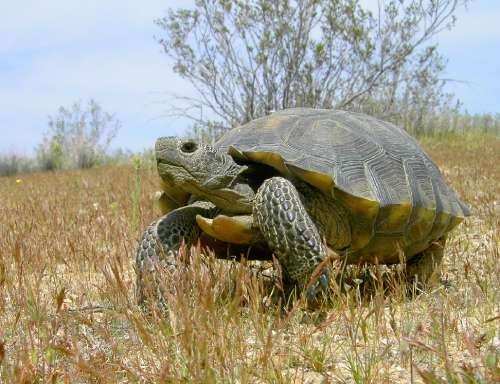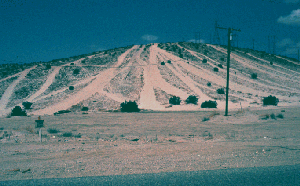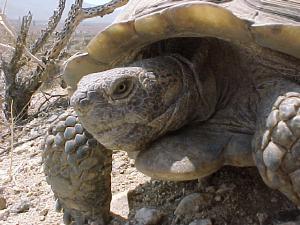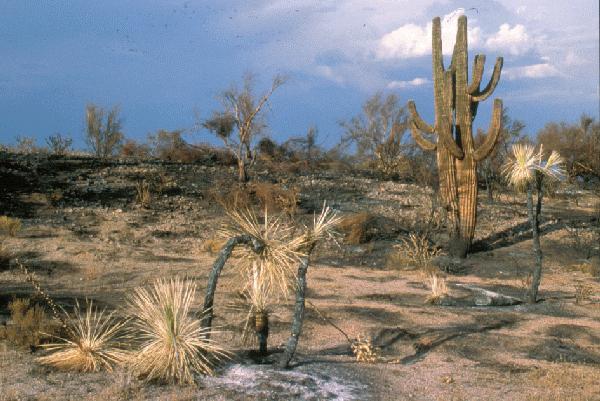- Home
- About S&T
- Taxa/Organisms
- Ecosystems
- Issues
- Methods & Tools
- Reports & Publications
- Location
- Search
May 21 2009 | Publisher: USGS | Format: URL
pubs.usgs.gov — A new tool provides land managers with a predictive model for mapping the potential distribution of desert tortoise habitat and to evaluate different land-use issues the tortoises face at a landscape scale. The model incorporates an extensive amount of field data for desert tortoises, as well as environmental data related to landscape attributes, More...

May 2009 | Publisher: USGS | Science Center: Western Ecological Research Center (WERC, Sacramento) | Format: URL
www.werc.usgs.gov — This study encompasses the range of the Mojave population of desert tortoises north and west of the Colorado River, as well as a small portion of the northwest Sonoran Desert, and comprises 336,594 square kilometers of basin-and-range topography, including parts of California, Nevada, Utah, and Arizona. The habitat model provides a basal More...

June 2001 | Publisher: USGS | Science Center: Western Ecological Research Center (WERC, Sacramento) | Format: URL
www.werc.usgs.gov — Salvage of injured, recently dead, ill, and dying desert tortoises is a very important part of recovery programs for these reptiles. Salvaged desert tortoises can provide a wealth of information about such subjects as health, disease, presence of heavy metals and other toxicants, and causes of mortality in populations. When tortoises are salvaged More...

Publisher: USGS | Science Center: Western Ecological Research Center (WERC, Sacramento) | Format: .PDF
www.werc.usgs.gov — One cause for declines in desert tortoise populations is predation on juveniles by common ravens (Corvus corax), a predatory bird species native to the Mojave Desert. The Recovery Plan for the Desert Tortoise recommended that research be conducted on sources of mortality (including natural predation). This study was implemented to investigate the More...

Publisher: USGS | Science Center: Western Ecological Research Center (WERC, Sacramento) | Format: URL
www.werc.usgs.gov — This project started to conduct an extensive review of the literature pertaining to restoring degraded desert tortoise habitat, with emphasis on the Mojave Desert. Recovery to pre-disturbance plant cover and biomass may take from 50-300 years while complete ecosystem recovery may require over 3,000 years. Restoration can be used to enhance the More...

Publisher: USGS | Science Center: Southwest Biological Science Center (SBSC, Flagstaff) | Format: URL
sbsc.wr.usgs.gov — The desert tortoise is listed as a threatened species under federal and California versions of the Endangered Species Act. The recovery plan for the desert tortoise recommended that additional data be collected on the reproductive ecology of the species throughout the range. Annual meetings between USGS, Biological Resources Division researchers More...

Publisher: NBII | Format: URL
www.nbii.gov — Natural resource managers face complex decisions that require a clear understanding of the status of wildlife populations and their habitats. Monitoring is key to making effective management decisions and evaluating the outcomes of those decisions. The goal of NRMP is to improve the accessibility of monitoring efforts to resource managers to aid More...

Publisher: USGS | Science Center: Fort Collins Science Center (FORT, Ft. Collins) | Format: URL
www.fort.usgs.gov — Natural Resource Monitoring Partnership (NRMP) is a collaborative effort by the natural resource management community to improve monitoring efforts in order to support effective evaluation and decision-making by sharing information on monitoring projects and protocols. The Natural Resource Monitoring Partnership was built for easy access to More...

Publisher: NBII | Format: URL
frames.nbii.gov — The Fire Research And Management Exchange System or FRAMES is a systematic method of exchanging information and transferring technology between wildland fire researchers, managers, and other stakeholders. In partnership with the US Geological Survey's National Biological Information Infrastructure (NBII) Program, FRAMES is implementing web-based More...

Publisher: USGS | Science Center: Western Ecological Research Center (WERC, Sacramento) | Format: URL
www.werc.usgs.gov — This issues overview and its resources deal with the spread of nonnative grasses in the Sonoran desert of Arizona has increased the risk of devastating fires by ignited fuel. The saguaro cactuses and desert tortoises have suffered catastrophic population losses as a result of these fires fueled by nonnative grasses. Read more about nonnative More...

Publisher: USGS | Science Center: Fort Collins Science Center (FORT, Ft. Collins) | Format: URL
www.fort.usgs.gov — Captive desert tortoises (gopherus agassizii) are getting a "second chance" to live and reproduce in the deserts of the southwest thanks to a unique partnership among state and federal agencies in Nevada. As part of the Desert Tortoise Translocation and Habitat Efficacy Study, captive desert tortoises will be released starting March of 1997 onto More...
